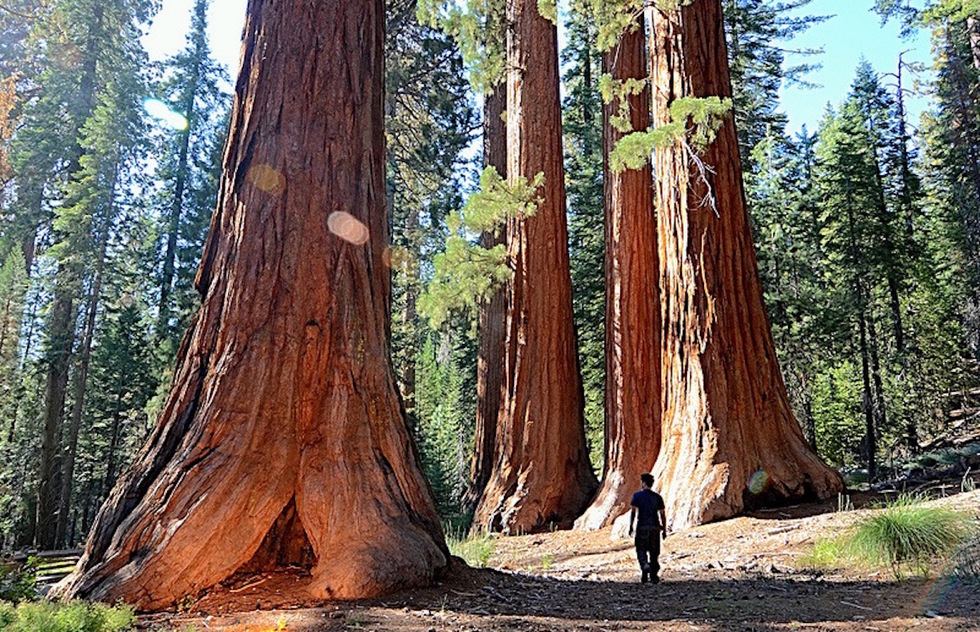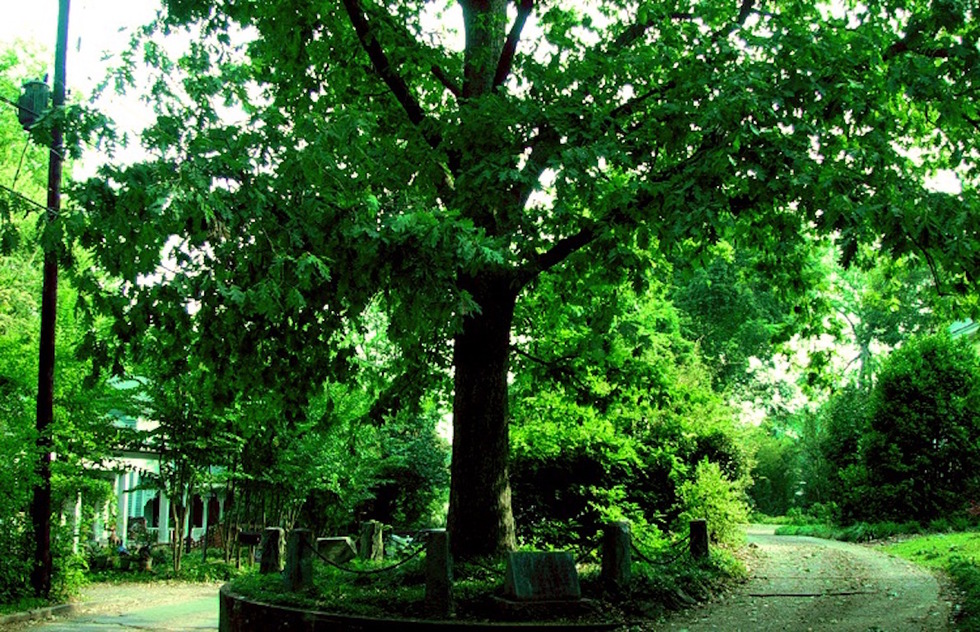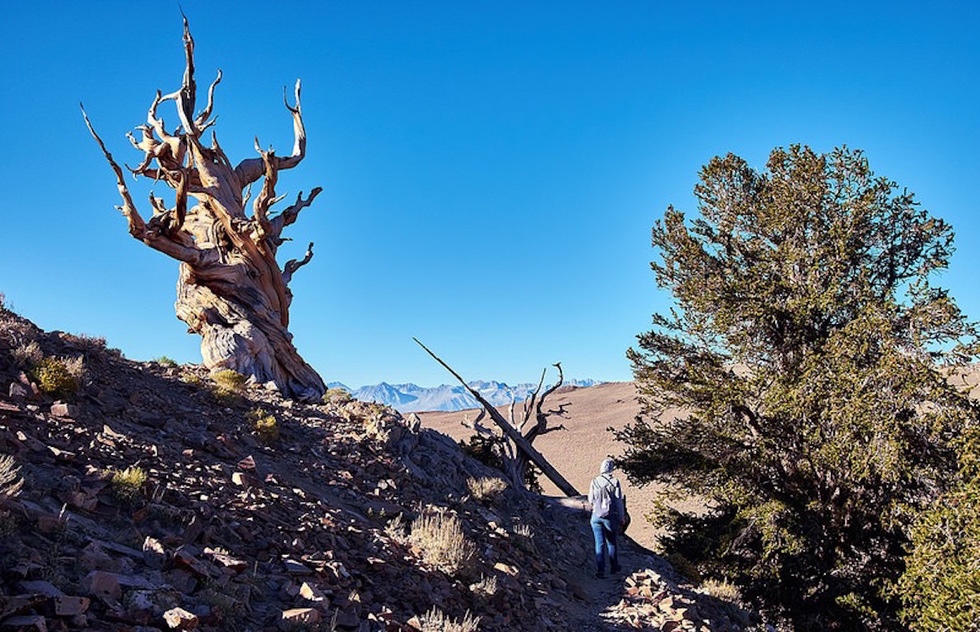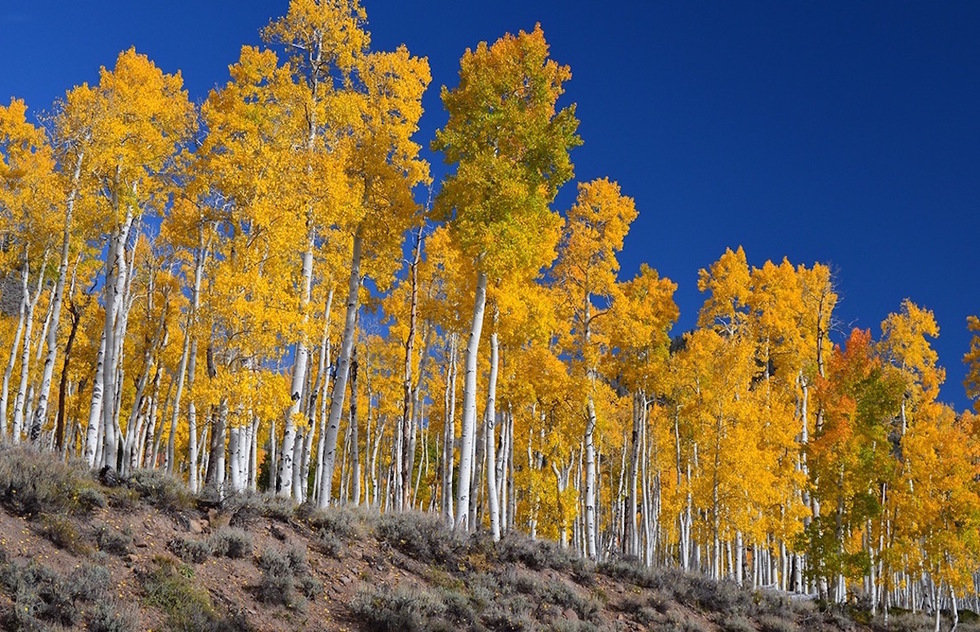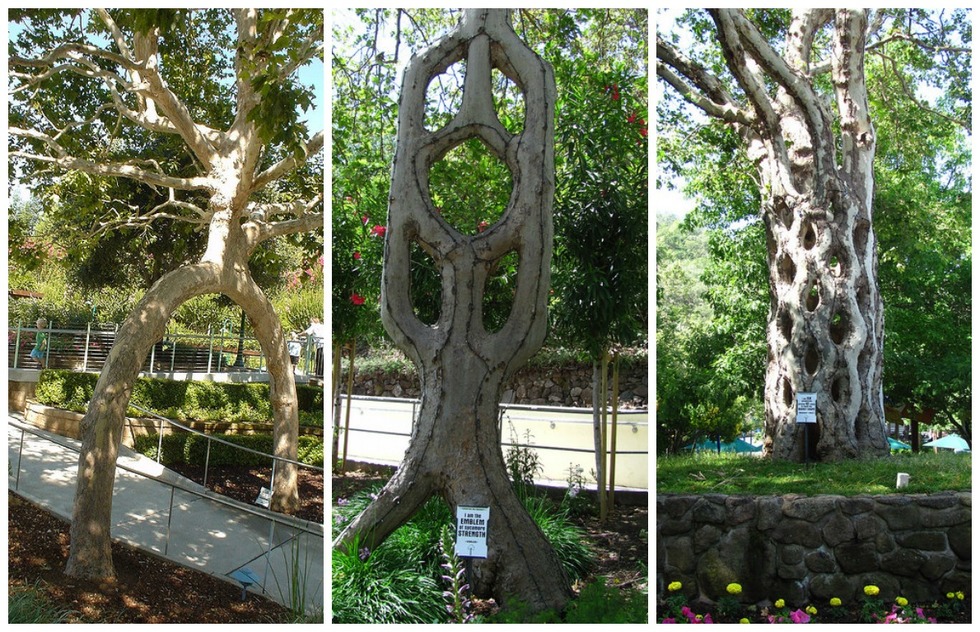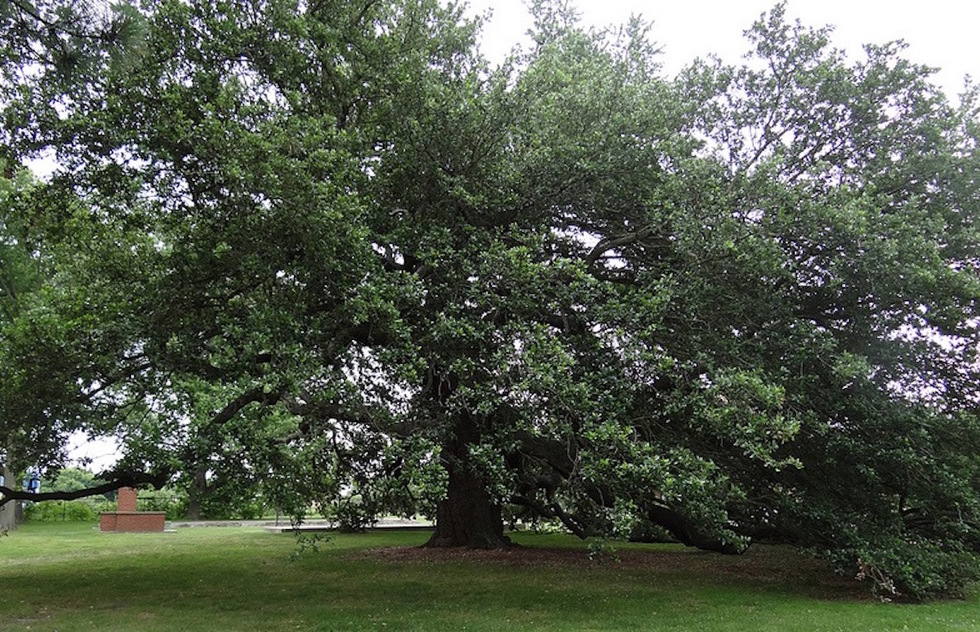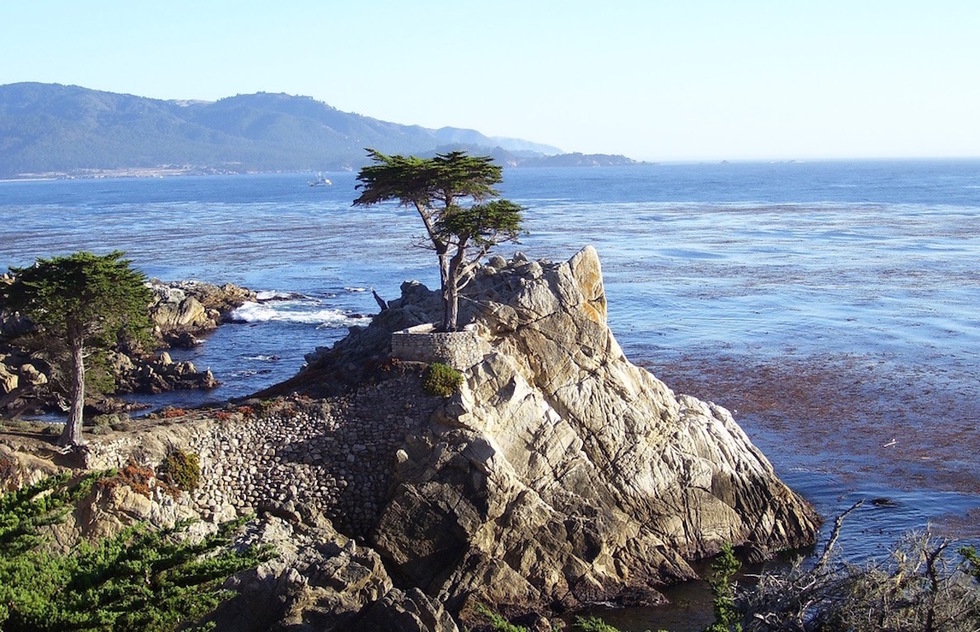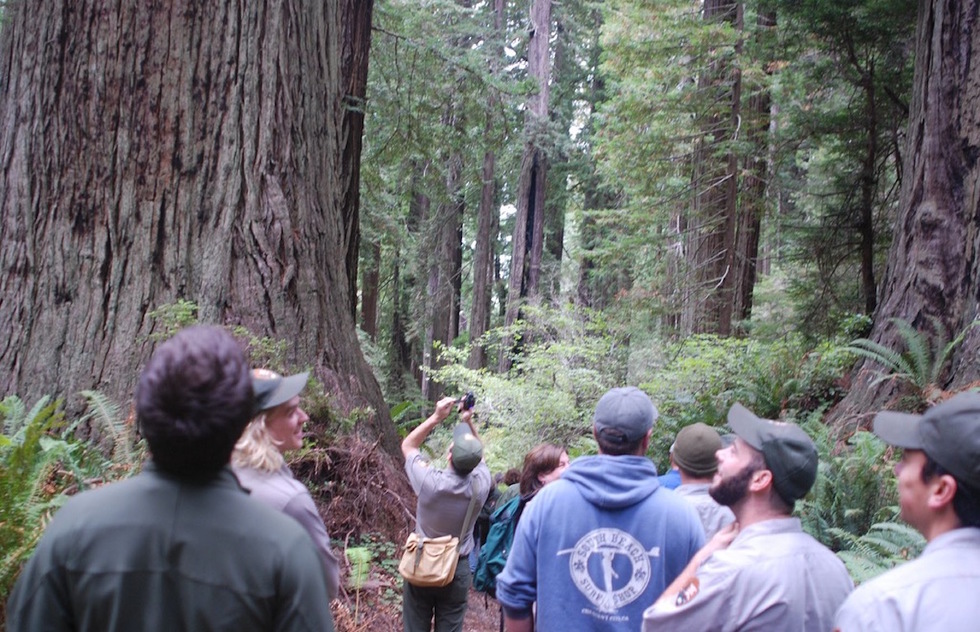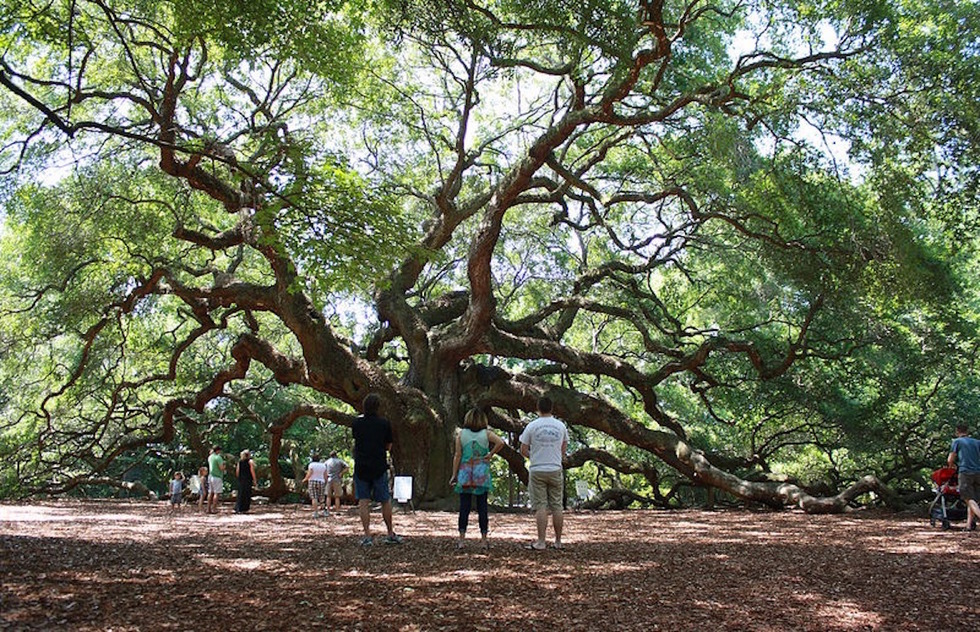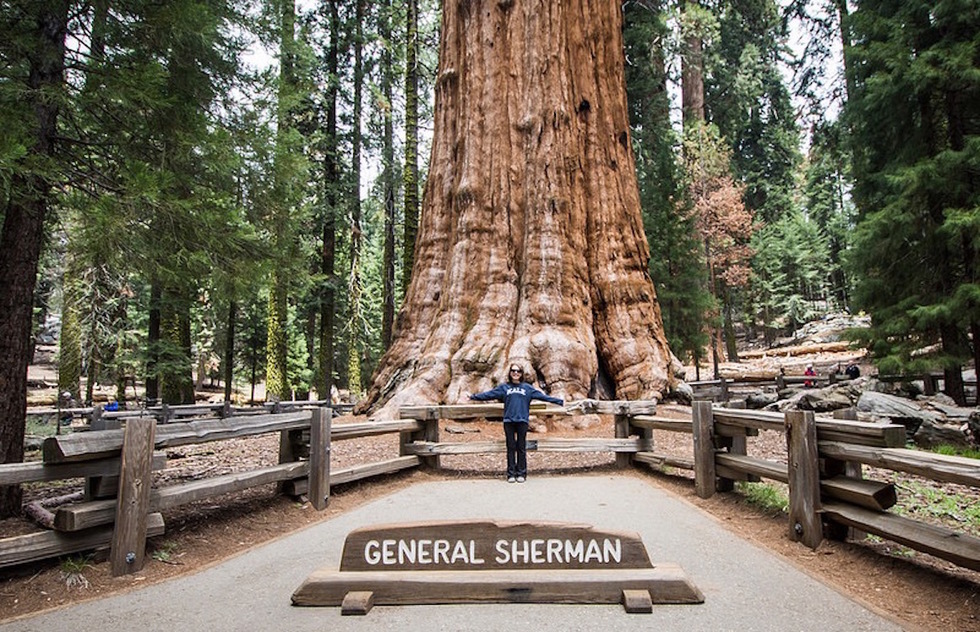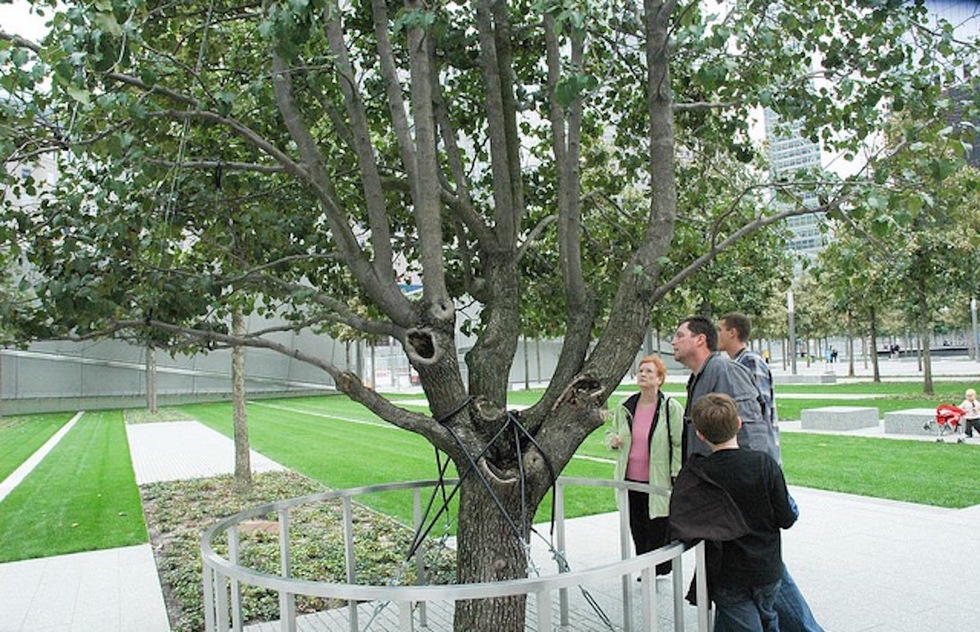Rooted in History: America's 10 Most Astonishing Trees
By Andrew FlemingFinding it: It's two miles north of Athens on S. Finely St.
Estimated at around 4,800 years old, this tree was a mere sapling when the ancient Egyptians built their pyramids. For decades, it was known as the planet’s oldest living non-clonal tree (i.e. it hasn’t been continually replacing itself with genetic clones.) It lost that title in 2013 when another Bristlecone pine (p. longaeva) of the White Mountains was discovered to have stood for over 5,000 years. Fearing souvenir collectors with pocket knives, researchers have not released the exact locations of either of these treasures. For Methuselah, however, they’ve at least said it’s in the Methuselah Grove of the Ancient Bristlecone Pine Forest, so if you take an afternoon to walk this otherworldly wood, you’ll surely see the old tree. You just won’t be sure exactly which of the one it is—which only helps you appreciate them all.
Finding it: 310 miles southeast of Sacramento in the Ancient Bristlecone Pine Forest, just north of Death Valley National Park in a section of the Inyo National Forest, which borders Nevada and California.
So this one doesn't look so much your usual tree, but rather a sprawling colony of regenerating clonal stems that connect at the root to form one massive organism. Pando (the grove’s name is Latin for “I spread”) consists of approximately 47,000 quaking aspens, which cover more than 100 acres of forest. Weighing in at about 6,000 tons, these aspens are claimed to be the world’s largest living organism by mass. Age estimates for Pando range between 80,000 thousand to 100,000 years old, which likely qualifies it as the world’s oldest living organism as well. Since each of the trees possesses the same genetic information, they sync perfectly to set alight gorgeous gold foliage every fall.
Finding it: 35 miles south of San Jose in the town of Gilroy
Finding it: At Hampton University, 16 miles north of Norfolk across the James River off I-64 West.
With roots powerful enough to dig into the rocky outcropping and branches hardy enough to withstand strong coastal winds, this monterey cypress stands in stoic solitude on the California coast. That’s why it is appreciated by tourists simply for being a beautiful testament to life’s strength. It has survived arson, graffiti, and vandals who stripped its branches. Claimed to be the most photographed tree in the America, it can be seen along a famously scenic 17-Mile Drive in Pebble Beach. The road also features beautiful beaches, coastal cliffs, and the magical Del Monte Forest.
Finding it: 24 miles east of Salinas on 17-Mile Drive, inside Pebble Beach Resorts.
At 379 feet (and still growing), this coastal redwood is the world’s tallest tree. Discovered in 2006 by foresters Chris Atkins and Michael Taylor, this giant stole the title from a fellow member of its species, Stratosphere Giant. Hyperion was measured by a team led by ecologist Steve Sillett using a rather old-fashioned process in which a researcher climbs to the top branch and drops a tape measure with something heavy tied to it. Not wanting a rush of visitors to harm their discovery, Atkins and Taylor never disclosed its exact location, making “Hyperion” a properly mythic name for a tree located somewhere in the groves of Redwood National Park of Northern California (pictured).
Seemingly enchanted by some benevolent witch, this lovely live oak has shaded Johns Island, South Carolina, for somewhere between 500 to 1,500 years (its exact age remains contested), making it potentially one of the oldest trees on the East Coast of America. With its longest branch stretching 187 feet, this tree produces 17,200 square feet of shade in Angel Oak Park. And its significance is not only natural but historical as well, as during segregation, African-American and white families would both picnic under the sheltering boughs, making the area a small haven from the racial strife. Today, it would still be very difficult to find a better place for a picnic.
Finding it: 232 miles east of San Jose in Sequoia National Park.
Finding it: It's in Memorial Plaza outside the National September 11 Memorial & Museum in downtown Manhattan.





